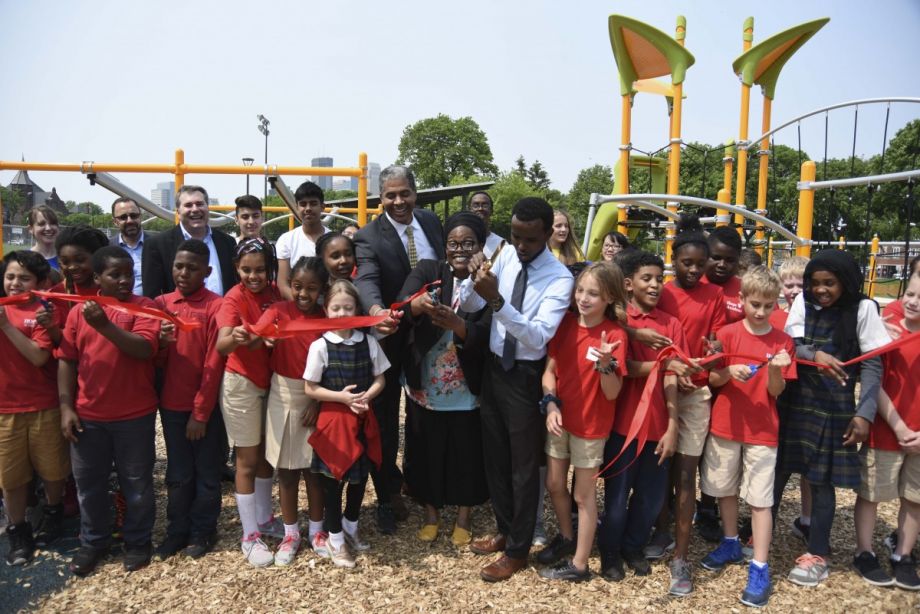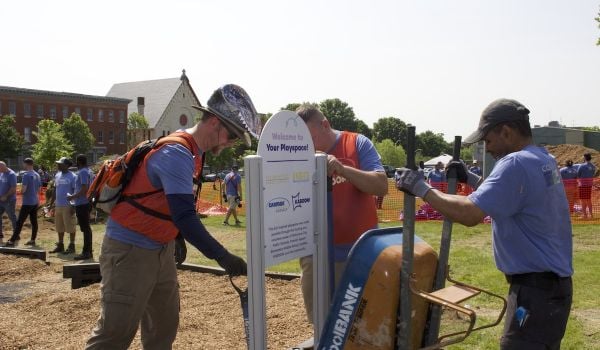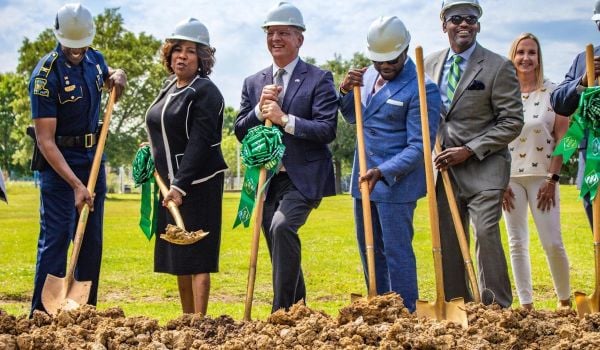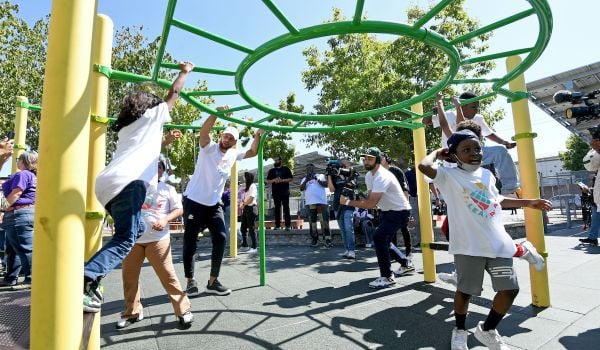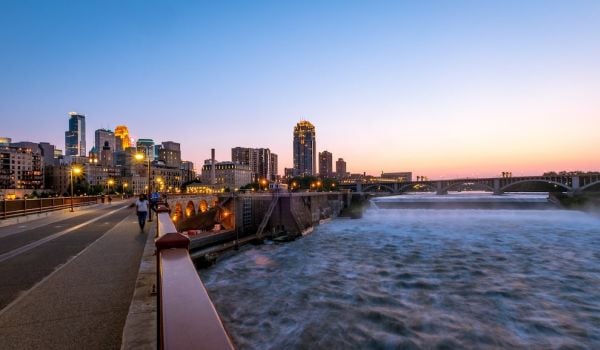City parks are one of the few places people in the United States can go while life is otherwise shut down due to the coronavirus pandemic. The crisis highlights the value of these urban green spaces. Yet all too often, investment in neighborhood parks located in communities of color or low-income areas have been neglected when it comes to capital investments. One notable exception is in the city of Minneapolis, where in 2016, the Minneapolis Park and Recreation Board approved a 20-year plan to radically transform how the city invests in its parks, with racial and class equity front and center.
The parks board recognized years ago that park funding wasn’t keeping up with needs, and it began outreach efforts in 2011 to get community input on park needs. Adam Arvidson, director of strategic planning at the MPRB, says: “The Park Board had been seeing its funding reduced across many decades, and that was creating a maintenance backlog for us.”
The Park Board identified parks that would see long-term funding gaps if the spending formula didn’t change. Input from residents about the improvements they would like to see, became what Arvidson calls the “baseline” for some of the equity metrics being used now, such as historic investment in a particular park.
Currie Park, about a mile and a half west of the city center in a dense neighborhood with many immigrants from Somalia, Russia and South Korea, is one of the first parks to benefit from the new funding plan. It received nearly $3 million from the fund established in 2016 that allocates a minimum of $11 million per year to neighborhood park improvements until 2036. If the COVID-19 pandemic allows for it, the renovated park should be unveiled this summer.
“The master plan at Currie Park calls for some of the most aggressive changes we’ve seen in any of our master plans,” says Daniel Elias, the park’s project manager. The park’s synthetic-turf soccer field will be relocated and covered with a dome; the playground and basketball courts will be relocated, and a splash pad will be built.
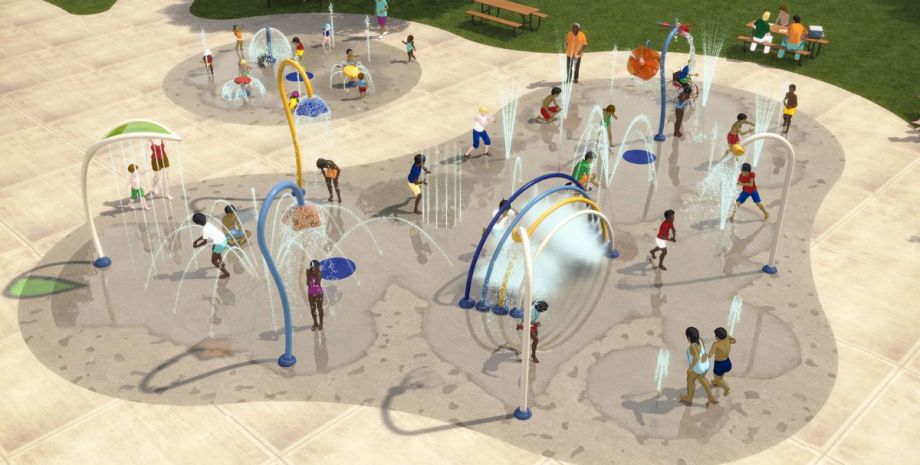
The “aggressive” renovations at Currie Park include a splash pad. (Rendering courtesy Minneapolis Parks & Recreation Board)
The Neighborhood Park Plan maps out a strategy for making capital investments in parks and created equity metrics to determine where investments should be made. It’s the first criteria-based funding system in the United States. The metrics are reviewed annually to ensure that the parks board, a semi-autonomous body that runs the city’s 179 parks and recreation centers, isn’t allowing any unforeseen and unintended consequences to become entrenched.
The scoring system ranks parks based on racial and economic metrics to prioritize parks for capital investment. The parks board looks at a park’s infrastructure — swing sets, basketball courts, trails, etc. — to evaluate what shape they’re in and how long they’ve been in use. It also looks at community characteristics such as population density, crime statistics, and measurement from the U.S. Department of Housing and Urban Development that identifies areas where half the population is below the poverty line and half are people of color.. The scoring system also takes into account whether a facility experiences high use outside of program times and the diversity of the surrounding community since being able to provide language-appropriate services to different immigrant groups, for example, involves higher costs.
Catherine Nagel runs the City Parks Alliance, an association of urban parks officials and city leaders from across North America that researches and advocates for urban-park-policy solutions. She says Minneapolis’ use of data is noteworthy. “They can use layers of data to understand the health implications, [look] at housing and other social implications in determining how a city will use public funds to serve the communities most in need,” Nagel says.
To ensure the metrics would generate an accurate result, Arvidson and his team ran the numbers several times and evaluated whether the data reflected the reality parks staff knew on the ground. This was an important security check, Arvidson says, but the data also brought surprises. “The power of empirical equity data [is that] it will reinforce what you already know, but it will expose the things you might have had blinders to,” Arvidson says.
As an example, Arvidson points to Painter Park, located in a wealthy Minneapolis community. The park consistently ranked in the top-20 priority parks, regardless of how Arvidson and his team tweaked the metrics. “When you look at it on a very fine scale, we realized that Painter Park is adjacent to an enclave of Somali-American resettlement within the city from areas where [Somalis] have traditionally lived,” Arvidson says. “So, density was higher; it was less white, and there was a higher population of youth. We would not have seen that from the 30,000-foot view,” Arvidson says.
This story is part of The Power of Parks, a series exploring how parks and recreation facilities and services can help cities achieve their goals in wellness, conservation and social equity. The Power of Parks is supported by a grant from the National Recreation and Park Association.

Zoe Sullivan is a multimedia journalist and visual artist with experience on the U.S. Gulf Coast, Argentina, Brazil, and Kenya. Her radio work has appeared on outlets such as BBC, Marketplace, Radio France International, Free Speech Radio News and DW. Her writing has appeared on outlets such as The Guardian, Al Jazeera America and The Crisis.
Follow Zoe .(JavaScript must be enabled to view this email address)

